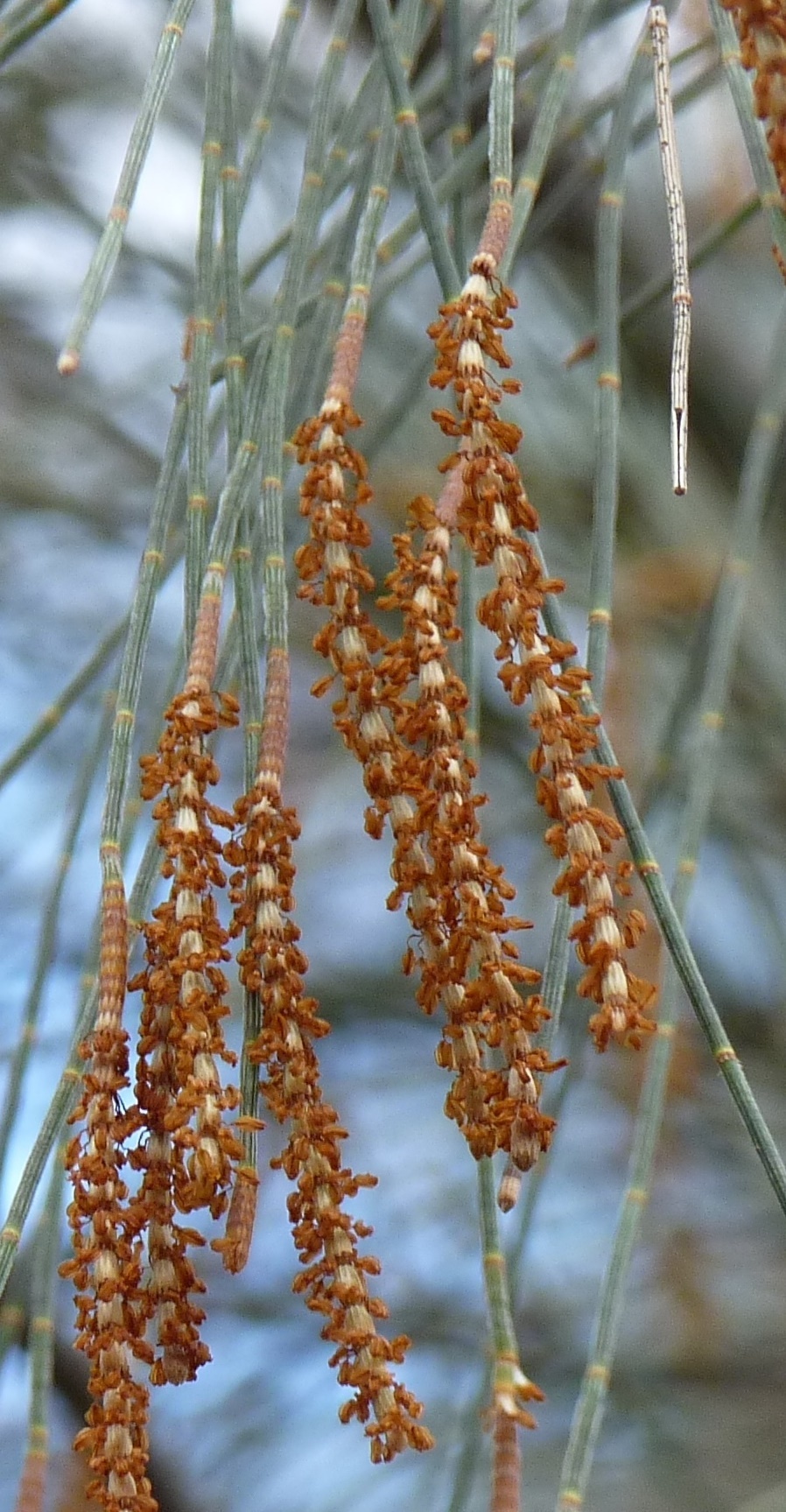
Trees or shrubs. Branchlets thin and wiry, composed of jointed segments, generally shed after 1-2 years. Leaves small, tooth-like at the joint of each branchlet segment, fused shortly at the base. Flowers unisexual, on the same or different plants. Male flowers in a short or long spike, the individual flowers with 1 stamen. Female flowers in a round or ovoid head. Carpels 2, fused; ovary with 2(4) ovules; styles 2-branched, reddish. Wind pollinated. Fruit cone-like, woody with openings having enlarged lips (valves); seed a winged nut (samara).
The common name (also spelled She-oke) was used in reference to the inferior timber resembling that of the English Oak. This was once a much more widely distributed family; fossils of the Eocene and Miocene have been found in New Zealand and S America, and fossil pollen in S Africa; it was also once more widely distributed across Australia before the radiation and diversification of eucalypts. The roots are nitrogen-fixing.
Seed and semi-hardwood cuttings.
Once used widely for timber and fuel, now less so, although still grown for roof shingles in NSW and in China for fuel.
Thin, wiry jointed branchlets with minute leaves at the joints; woody cone-like fruits.
Waite Research Institute, University of Adelaide had 15 species in 1989.
4 genera and 95 species, tropical, subtropical and warm temperate; Australia, Pacific Islands, SE Asia (Australia has 3 genera and 66 species).
Bennett (1982), Wilson & Johnson (1989).
Source: (1997). Casuarinaceae. In: . Horticultural Flora of South-eastern Australia. Volume 2. Flowering plants. Dicotyledons. Part 1. The identification of garden and cultivated plants. University of New South Wales Press.
